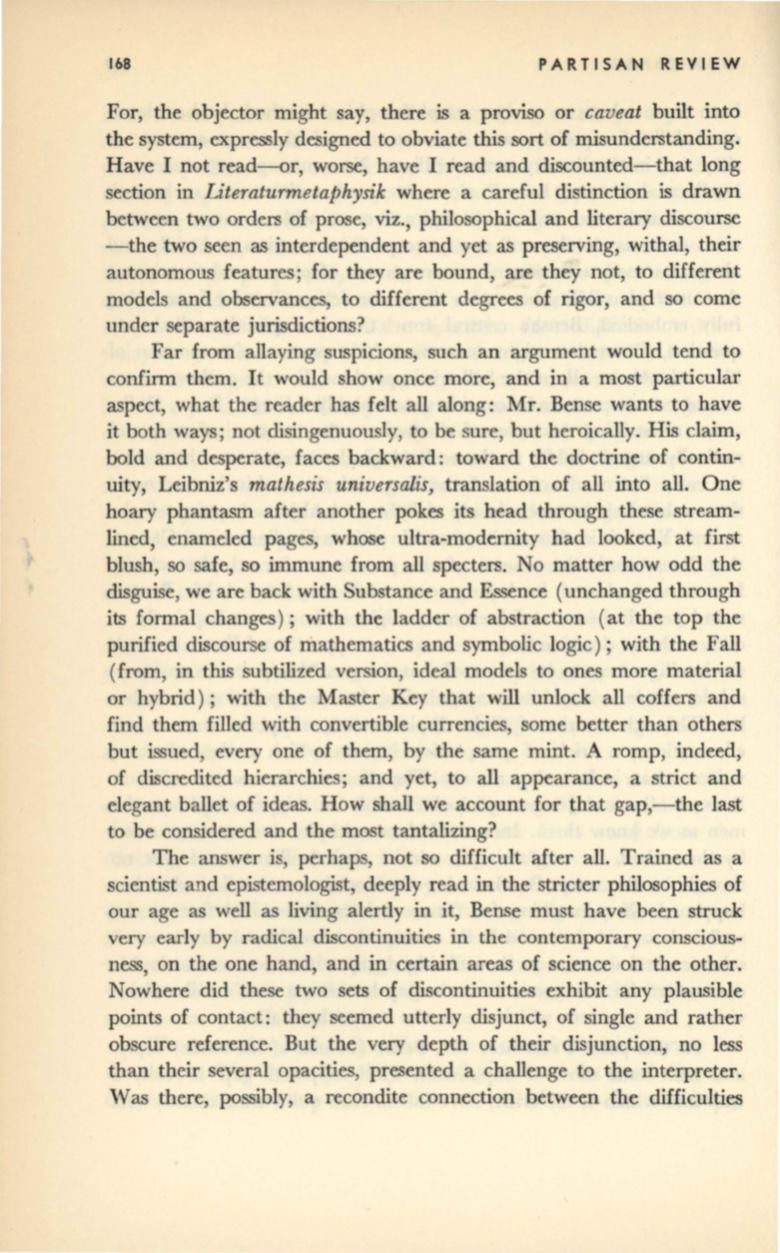
168
PARTISAN REVIEW
For, the objector might say, there is a proviso or
caveat
built into
the system, expressly designed to obviate this sort of misunderstanding.
Have I not read-or, worse, have I read and discounted-that long
section in
Literaturmetaphysik
where a careful distinction is drawn
between two orders of prose, viz., philosophical and literary discourse
-the two seen as interdependent and yet as preserving, withal, their
autonomous features; for they are bound, are they not, to different
models and observances, to different degrees of rigor, and so come
under separate jurisdictions?
Far from allaying suspicions, such an argument would tend to
confirm them. It would show once more, and in a most particular
aspect, what the reader has felt all along: Mr. Bense wants to have
it both ways; not disingenuously, to be sure, but heroically. His claim,
bold and desperate, faces backward: toward the doctrine of contin–
uity, Leibniz's
mathesis universalis,
translation of all into all. One
hoary phantasm after another pokes its head through these stream–
lined, enameled pages, whose ultra-modernity had looked, at first
blush, so safe, so immune from all specters. No matter how odd the
disguise, we are back with Substance and Essence (unchanged through
its formal changes); with the ladder of abstraction (at the top the
purified discourse of mathematics and symbolic logic) ; with the Fall
(from, in this subtilized version, ideal models to ones more material
or hybrid); with the Master Key that will unlock all coffers and
find them filled with convertible currencies, some better than others
but issued, every one of them, by the same mint. A romp, indeed,
of discredited hierarchies; and yet, to all appearance, a strict and
elegant ballet of ideas. How shall we account for that gap,-the last
to be considered and the most tantalizing?
The answer is, perhaps, not so difficult after all. Trained as a
scientist and epistemologist, deeply read in the stricter philosophies of
our age as well as living alertly in it, Bense must have been struck
very early by radical discontinuities in the contemporary conscious–
ness, on the one hand, and in certain areas of science on the other.
Nowhere did these two sets of discontinuities exhibit any plausible
points of contact: they seemed utterly disjunct, of single and rather
obscure reference. But the very depth of their disjunction, no less
than their several opacities, presented a challenge to the interpreter.
Was there, possibly, a recondite connection between the difficulties


